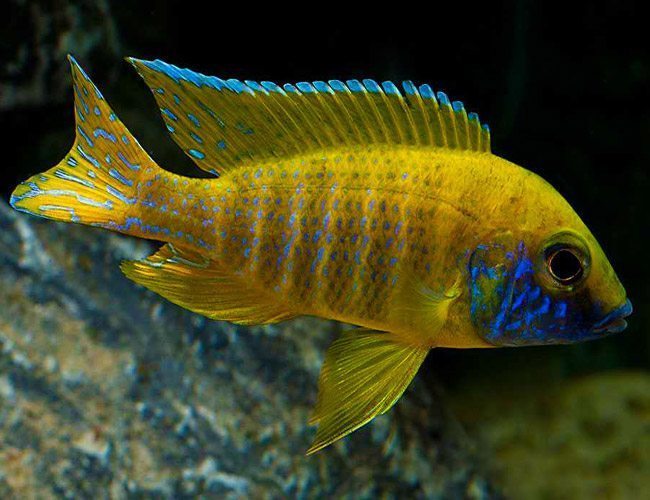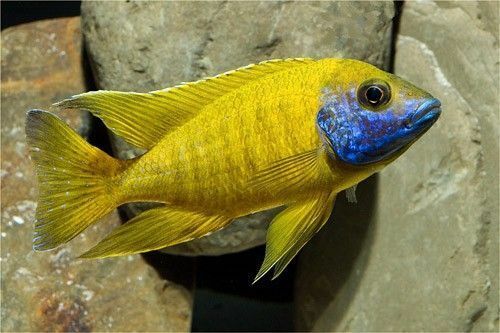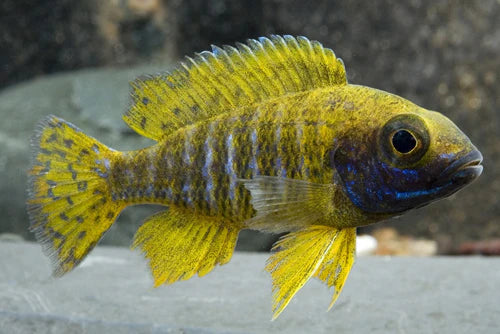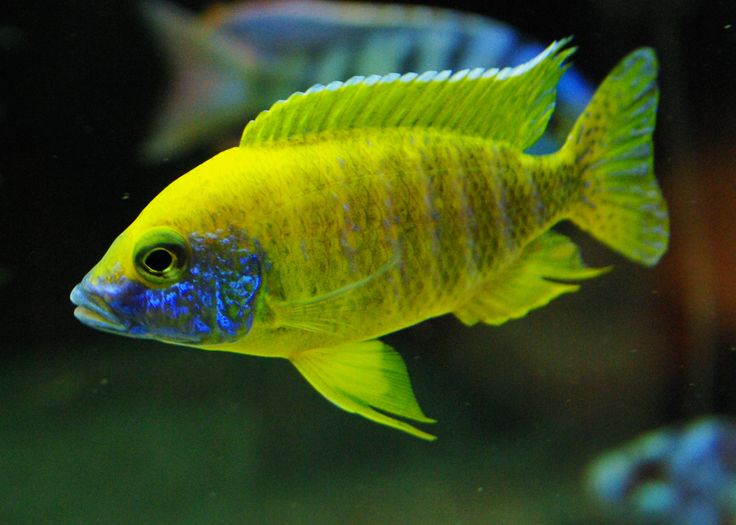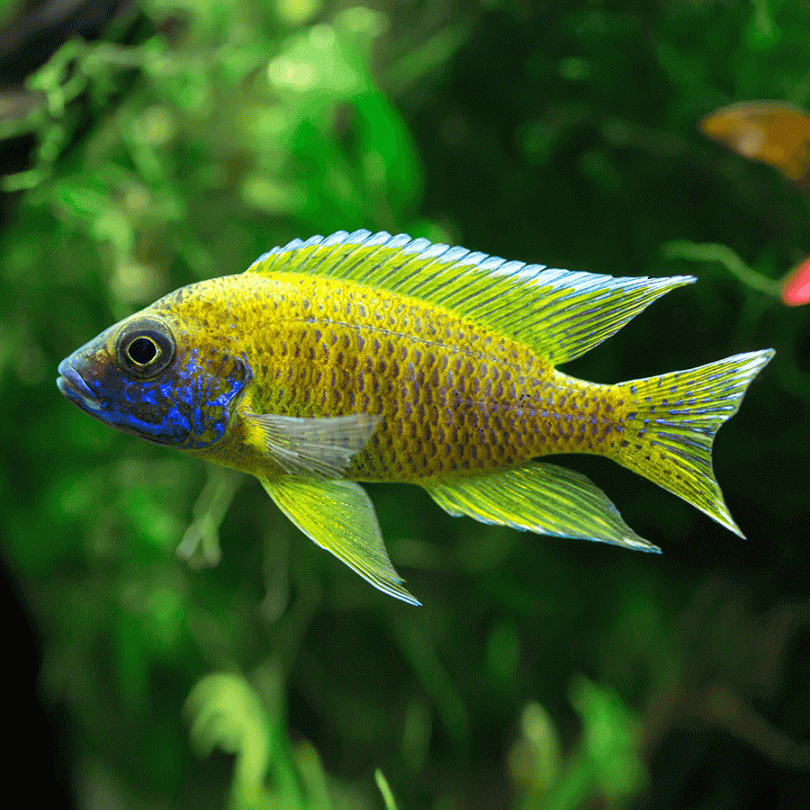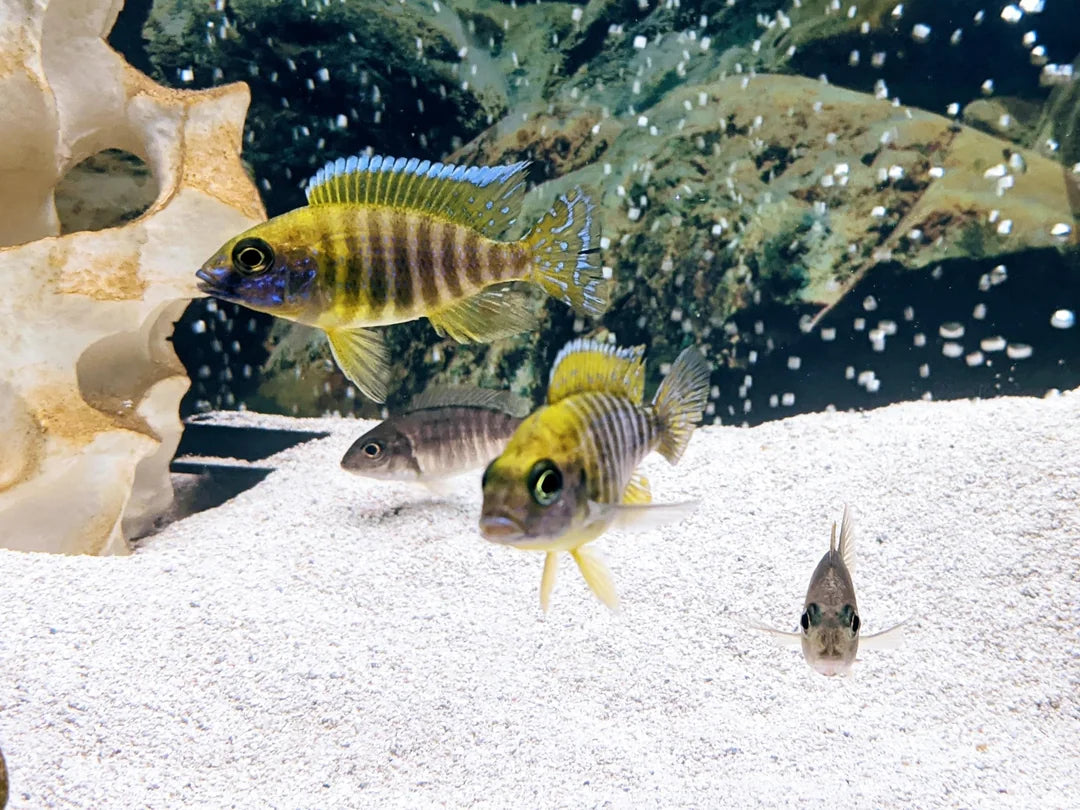Sunshine Peacock Cichlid (Aulonocara baenschi) - Live Fish
Sunshine Peacock Cichlid (Aulonocara baenschi) - Live Fish
Total items
Product subtotal
Detailed Description
Detailed Description
The Sunshine Peacock Cichlid (Aulonocara baenschi) is a vibrant and stunning variation of the Peacock Cichlid species, which is native to Lake Malawi in East Africa. Known for its brilliant coloration and peaceful nature, the Sunshine Peacock is a favorite among aquarium enthusiasts who enjoy keeping African cichlids. This species is highly prized for its bright yellow coloration and its iridescent blue hues, which make it a spectacular addition to many freshwater aquariums.
Physical Characteristics:
-
Coloration:
- The Sunshine Peacock is most well-known for its bright, sunny yellow body that can range from pale yellow to golden hues. This vibrant coloration makes it one of the most striking cichlids available.
- Males tend to have a more intense yellow coloration with additional blue highlights on the head and gill plates, especially during breeding displays.
- The body is often dotted with light orange or red accents, particularly around the fins.
- The fish’s long and flowing dorsal fin and tail contribute to its graceful, peacock-like appearance.
-
Size:
- The Sunshine Peacock Cichlid typically grows to a size of about 6 to 7 inches (15 to 18 cm), which is typical for peacock cichlids, and they have a relatively slender, streamlined body.
Care and Habitat:
-
Water Conditions:
- The Sunshine Peacock Cichlid requires alkaline water, with a pH between 7.5 and 8.5. Like other peacock cichlids, they thrive in hard water that reflects the mineral-rich environment of Lake Malawi.
- The temperature should be maintained between 76°F and 80°F (24°C to 27°C), which is ideal for tropical freshwater fish.
- Good filtration and water circulation are essential, as peacock cichlids thrive in well-oxygenated water.
-
Tank Setup:
- A 55-gallon tank is ideal for keeping a single Sunshine Peacock Cichlid, and larger tanks are recommended if you plan to keep multiple individuals. Since they are territorial, especially during breeding, adequate space will help reduce conflicts.
- The tank should be decorated with rock formations, caves, and crevices, which provide hiding places and territory for each fish. These structures will also mimic their natural environment.
- A sand substrate is the best option, as it is similar to the rocky shores of Lake Malawi, where the Sunshine Peacock is found.
Diet:
- The Sunshine Peacock Cichlid is an omnivore, and it thrives on a varied diet.
- High-quality cichlid pellets, spirulina, and algae-based foods should be a staple part of their diet.
- They also enjoy live or frozen foods such as brine shrimp, bloodworms, daphnia, and krill. A mix of protein-rich and plant-based foods will promote both health and coloration.
- A balanced diet is crucial to bring out their full coloration and maintain overall health.
Behavior and Socialization:
-
Temperament:
- The Sunshine Peacock Cichlid is known for its relatively peaceful nature compared to many other African cichlids. While they are somewhat territorial, they are generally non-aggressive and can be kept in a community aquarium with other peaceful species.
- Males, especially during the breeding season, may show territorial behavior, but they typically do not engage in the extreme aggression seen in other African cichlids.
-
Socialization:
- The Sunshine Peacock is best kept with other peaceful African cichlids that share similar water parameters, such as those from Lake Malawi (e.g., Mbuna, Cynotilapia, Pseudotropheus, or other Aulonocara species).
- They can also be housed with larger, non-aggressive species, such as synodontis catfish or other peaceful fish like tetras, but should not be kept with overly aggressive or much larger species.
- It's important to avoid keeping multiple males in the same tank, as they can become aggressive toward each other, especially during mating displays.
Breeding:
- Like other peacock cichlids, the Sunshine Peacock is a mouthbrooder, which means that the female carries the fertilized eggs in her mouth (buccal cavity) until they hatch.
- During breeding, males display their vibrant colors and perform a range of nuptial dances to attract females. The males will also often display their fins and swim in a specific pattern to court the females.
- After fertilization, the female keeps the fertilized eggs in her mouth for around 3 weeks until they hatch, at which point the fry will stay in her mouth for protection until they are ready to swim independently.
The Sunshine Peacock Cichlid is an excellent choice for those who want a beautiful and relatively easy-to-care-for cichlid. Its brilliant yellow color, peaceful nature, and striking appearance during breeding make it an outstanding addition to a well-maintained African cichlid tank. With proper care—including appropriate water conditions, a varied diet, and sufficient space—this stunning fish will thrive in your aquarium, bringing both beauty and personality to the tank.
Product features
Product features
Materials and care
Materials and care
Merchandising tips
Merchandising tips
Share
